
HippoRAG
[NeurIPS'24] HippoRAG is a novel RAG framework inspired by human long-term memory that enables LLMs to continuously integrate knowledge across external documents. RAG + Knowledge Graphs + Personalized PageRank.
Stars: 2754
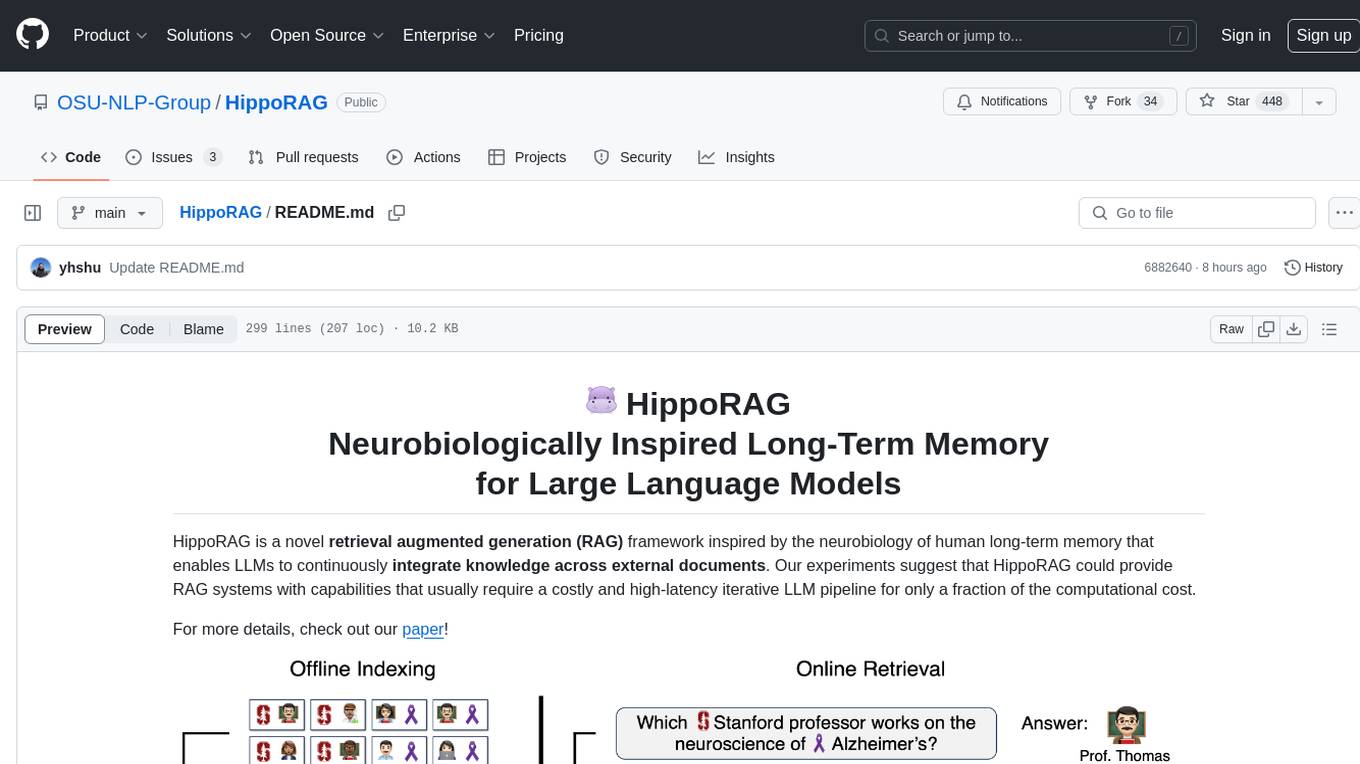
HippoRAG is a novel retrieval augmented generation (RAG) framework inspired by the neurobiology of human long-term memory that enables Large Language Models (LLMs) to continuously integrate knowledge across external documents. It provides RAG systems with capabilities that usually require a costly and high-latency iterative LLM pipeline for only a fraction of the computational cost. The tool facilitates setting up retrieval corpus, indexing, and retrieval processes for LLMs, offering flexibility in choosing different online LLM APIs or offline LLM deployments through LangChain integration. Users can run retrieval on pre-defined queries or integrate directly with the HippoRAG API. The tool also supports reproducibility of experiments and provides data, baselines, and hyperparameter tuning scripts for research purposes.
README:
HippoRAG 2 is a powerful memory framework for LLMs that enhances their ability to recognize and utilize connections in new knowledge—mirroring a key function of human long-term memory.
Our experiments show that HippoRAG 2 improves associativity (multi-hop retrieval) and sense-making (the process of integrating large and complex contexts) in even the most advanced RAG systems, without sacrificing their performance on simpler tasks.
Like its predecessor, HippoRAG 2 remains cost and latency efficient in online processes, while using significantly fewer resources for offline indexing compared to other graph-based solutions such as GraphRAG, RAPTOR, and LightRAG.
Figure 1: Evaluation of continual learning capabilities across three key dimensions: factual memory (NaturalQuestions, PopQA), sense-making (NarrativeQA), and associativity (MuSiQue, 2Wiki, HotpotQA, and LV-Eval). HippoRAG 2 surpasses other methods across all categories, bringing it one step closer to true long-term memory.
Figure 2: HippoRAG 2 methodology.
- HippoRAG: Neurobiologically Inspired Long-Term Memory for Large Language Models [NeurIPS '24].
- From RAG to Memory: Non-Parametric Continual Learning for Large Language Models [ICML '25].
conda create -n hipporag python=3.10
conda activate hipporag
pip install hipporagInitialize the environmental variables and activate the environment:
export CUDA_VISIBLE_DEVICES=0,1,2,3
export HF_HOME=<path to Huggingface home directory>
export OPENAI_API_KEY=<your openai api key> # if you want to use OpenAI model
conda activate hipporagThis simple example will illustrate how to use hipporag with any OpenAI model:
from hipporag import HippoRAG
# Prepare datasets and evaluation
docs = [
"Oliver Badman is a politician.",
"George Rankin is a politician.",
"Thomas Marwick is a politician.",
"Cinderella attended the royal ball.",
"The prince used the lost glass slipper to search the kingdom.",
"When the slipper fit perfectly, Cinderella was reunited with the prince.",
"Erik Hort's birthplace is Montebello.",
"Marina is bom in Minsk.",
"Montebello is a part of Rockland County."
]
save_dir = 'outputs'# Define save directory for HippoRAG objects (each LLM/Embedding model combination will create a new subdirectory)
llm_model_name = 'gpt-4o-mini' # Any OpenAI model name
embedding_model_name = 'nvidia/NV-Embed-v2'# Embedding model name (NV-Embed, GritLM or Contriever for now)
#Startup a HippoRAG instance
hipporag = HippoRAG(save_dir=save_dir,
llm_model_name=llm_model_name,
embedding_model_name=embedding_model_name)
#Run indexing
hipporag.index(docs=docs)
#Separate Retrieval & QA
queries = [
"What is George Rankin's occupation?",
"How did Cinderella reach her happy ending?",
"What county is Erik Hort's birthplace a part of?"
]
retrieval_results = hipporag.retrieve(queries=queries, num_to_retrieve=2)
qa_results = hipporag.rag_qa(retrieval_results)
#Combined Retrieval & QA
rag_results = hipporag.rag_qa(queries=queries)
#For Evaluation
answers = [
["Politician"],
["By going to the ball."],
["Rockland County"]
]
gold_docs = [
["George Rankin is a politician."],
["Cinderella attended the royal ball.",
"The prince used the lost glass slipper to search the kingdom.",
"When the slipper fit perfectly, Cinderella was reunited with the prince."],
["Erik Hort's birthplace is Montebello.",
"Montebello is a part of Rockland County."]
]
rag_results = hipporag.rag_qa(queries=queries,
gold_docs=gold_docs,
gold_answers=answers)If you want to use LLMs and Embeddings Compatible to OpenAI, please use the following methods.
hipporag = HippoRAG(save_dir=save_dir,
llm_model_name='Your LLM Model name',
llm_base_url='Your LLM Model url',
embedding_model_name='Your Embedding model name',
embedding_base_url='Your Embedding model url')This simple example will illustrate how to use hipporag with any vLLM-compatible locally deployed LLM.
- Run a local OpenAI-compatible vLLM server with specified GPUs (make sure you leave enough memory for your embedding model).
export CUDA_VISIBLE_DEVICES=0,1
export VLLM_WORKER_MULTIPROC_METHOD=spawn
export HF_HOME=<path to Huggingface home directory>
conda activate hipporag # vllm should be in this environment
# Tune gpu-memory-utilization or max_model_len to fit your GPU memory, if OOM occurs
vllm serve meta-llama/Llama-3.3-70B-Instruct --tensor-parallel-size 2 --max_model_len 4096 --gpu-memory-utilization 0.95 - Now you can use very similar code to the one above to use
hipporag:
save_dir = 'outputs'# Define save directory for HippoRAG objects (each LLM/Embedding model combination will create a new subdirectory)
llm_model_name = # Any OpenAI model name
embedding_model_name = # Embedding model name (NV-Embed, GritLM or Contriever for now)
llm_base_url= # Base url for your deployed LLM (i.e. http://localhost:8000/v1)
hipporag = HippoRAG(save_dir=save_dir,
llm_model_name=llm_model,
embedding_model_name=embedding_model_name,
llm_base_url=llm_base_url)
# Same Indexing, Retrieval and QA as running OpenAI models aboveWhen making a contribution to HippoRAG, please run the scripts below to ensure that your changes do not result in unexpected behavior from our core modules.
These scripts test for indexing, graph loading, document deletion and incremental updates to a HippoRAG object.
To test HippoRAG with an OpenAI LLM and embedding model, simply run the following. The cost of this test will be negligible.
export OPENAI_API_KEY=<your openai api key>
conda activate hipporag
python tests_openai.pyTo test locally, you must deploy a vLLM instance. We choose to deploy a smaller 8B model Llama-3.1-8B-Instruct for cheaper testing.
export CUDA_VISIBLE_DEVICES=0
export VLLM_WORKER_MULTIPROC_METHOD=spawn
export HF_HOME=<path to Huggingface home directory>
conda activate hipporag # vllm should be in this environment
# Tune gpu-memory-utilization or max_model_len to fit your GPU memory, if OOM occurs
vllm serve meta-llama/Llama-3.1-8B-Instruct --tensor-parallel-size 2 --max_model_len 4096 --gpu-memory-utilization 0.95 --port 6578Then, we run the following test script:
CUDA_VISIBLE=1 python tests_local.pyTo use our code to run experiments we recommend you clone this repository and follow the structure of the main.py script.
We evaluated several sampled datasets in our paper, some of which are already included in the reproduce/dataset directory of this repo. For the complete set of datasets, please visit
our HuggingFace dataset and place them under reproduce/dataset. We also provide the OpenIE results for both gpt-4o-mini and Llama-3.3-70B-Instruct for our musique sample under outputs/musique.
To test your environment is properly set up, you can use the small dataset reproduce/dataset/sample.json for debugging as shown below.
Initialize the environmental variables and activate the environment:
export CUDA_VISIBLE_DEVICES=0,1,2,3
export HF_HOME=<path to Huggingface home directory>
export OPENAI_API_KEY=<your openai api key> # if you want to use OpenAI model
conda activate hipporagdataset=sample # or any other dataset under `reproduce/dataset`
# Run OpenAI model
python main.py --dataset $dataset --llm_base_url https://api.openai.com/v1 --llm_name gpt-4o-mini --embedding_name nvidia/NV-Embed-v2- As above, run a local OpenAI-compatible vLLM server with specified GPU.
export CUDA_VISIBLE_DEVICES=0,1
export VLLM_WORKER_MULTIPROC_METHOD=spawn
export HF_HOME=<path to Huggingface home directory>
conda activate hipporag # vllm should be in this environment
# Tune gpu-memory-utilization or max_model_len to fit your GPU memory, if OOM occurs
vllm serve meta-llama/Llama-3.3-70B-Instruct --tensor-parallel-size 2 --max_model_len 4096 --gpu-memory-utilization 0.95 - Use another GPUs to run the main program in another terminal.
export CUDA_VISIBLE_DEVICES=2,3 # set another GPUs while vLLM server is running
export HF_HOME=<path to Huggingface home directory>
dataset=sample
python main.py --dataset $dataset --llm_base_url http://localhost:8000/v1 --llm_name meta-llama/Llama-3.3-70B-Instruct --embedding_name nvidia/NV-Embed-v2vLLM offers an offline batch mode for faster inference, which could bring us more than 3x faster indexing compared to vLLM online server.
- Use the following command to run the main program with vLLM offline batch mode.
export CUDA_VISIBLE_DEVICES=0,1,2,3 # use all GPUs for faster offline indexing
export VLLM_WORKER_MULTIPROC_METHOD=spawn
export HF_HOME=<path to Huggingface home directory>
export OPENAI_API_KEY=''
dataset=sample
python main.py --dataset $dataset --llm_name meta-llama/Llama-3.3-70B-Instruct --openie_mode offline --skip_graph- After the first step, OpenIE result is saved to file. Go back to run vLLM online server and main program as described in the
Run with vLLM (Llama)main section.
-
/reproduce/dataset/sample.jsonis a small dataset specifically for debugging. - When debugging vLLM offline mode, set
tensor_parallel_sizeas1inhipporag/llm/vllm_offline.py. - If you want to rerun a particular experiment, remember to clear the saved files, including OpenIE results and knowledge graph, e.g.,
rm reproduce/dataset/openie_results/openie_sample_results_ner_meta-llama_Llama-3.3-70B-Instruct_3.json
rm -rf outputs/sample/sample_meta-llama_Llama-3.3-70B-Instruct_nvidia_NV-Embed-v2To setup your own custom dataset for evaluation, follow the format and naming convention shown in reproduce/dataset/sample_corpus.json (your dataset's name should be followed by _corpus.json). If running an experiment with pre-defined questions, organize your query corpus according to the query file reproduce/dataset/sample.json, be sure to also follow our naming convention.
The corpus and optional query JSON files should have the following format:
[
{
"title": "FIRST PASSAGE TITLE",
"text": "FIRST PASSAGE TEXT",
"idx": 0
},
{
"title": "SECOND PASSAGE TITLE",
"text": "SECOND PASSAGE TEXT",
"idx": 1
}
][
{
"id": "sample/question_1.json",
"question": "QUESTION",
"answer": [
"ANSWER"
],
"answerable": true,
"paragraphs": [
{
"title": "{FIRST SUPPORTING PASSAGE TITLE}",
"text": "{FIRST SUPPORTING PASSAGE TEXT}",
"is_supporting": true,
"idx": 0
},
{
"title": "{SECOND SUPPORTING PASSAGE TITLE}",
"text": "{SECOND SUPPORTING PASSAGE TEXT}",
"is_supporting": true,
"idx": 1
}
]
}
]When preparing your data, you may need to chunk each passage, as longer passage may be too complex for the OpenIE process.
📦 .
│-- 📂 src/hipporag
│ ├── 📂 embedding_model # Implementation of all embedding models
│ │ ├── __init__.py # Getter function for get specific embedding model classes
| | ├── base.py # Base embedding model class `BaseEmbeddingModel` to inherit and `EmbeddingConfig`
| | ├── NVEmbedV2.py # Implementation of NV-Embed-v2 model
| | ├── ...
│ ├── 📂 evaluation # Implementation of all evaluation metrics
│ │ ├── __init__.py
| | ├── base.py # Base evaluation metric class `BaseMetric` to inherit
│ │ ├── qa_eval.py # Eval metrics for QA
│ │ ├── retrieval_eval.py # Eval metrics for retrieval
│ ├── 📂 information_extraction # Implementation of all information extraction models
│ │ ├── __init__.py
| | ├── openie_openai_gpt.py # Model for OpenIE with OpenAI GPT
| | ├── openie_vllm_offline.py # Model for OpenIE with LLMs deployed offline with vLLM
│ ├── 📂 llm # Classes for inference with large language models
│ │ ├── __init__.py # Getter function
| | ├── base.py # Config class for LLM inference and base LLM inference class to inherit
| | ├── openai_gpt.py # Class for inference with OpenAI GPT
| | ├── vllm_llama.py # Class for inference using a local vLLM server
| | ├── vllm_offline.py # Class for inference using the vLLM API directly
│ ├── 📂 prompts # Prompt templates and prompt template manager class
| │ ├── 📂 dspy_prompts # Prompts for filtering
| │ │ ├── ...
| │ ├── 📂 templates # All prompt templates for template manager to load
| │ │ ├── README.md # Documentations of usage of prompte template manager and prompt template files
| │ │ ├── __init__.py
| │ │ ├── triple_extraction.py
| │ │ ├── ...
│ │ ├── __init__.py
| | ├── linking.py # Instruction for linking
| | ├── prompt_template_manager.py # Implementation of prompt template manager
│ ├── 📂 utils # All utility functions used across this repo (the file name indicates its relevant usage)
│ │ ├── config_utils.py # We use only one config across all modules and its setup is specified here
| | ├── ...
│ ├── __init__.py
│ ├── HippoRAG.py # Highest level class for initiating retrieval, question answering, and evaluations
│ ├── embedding_store.py # Storage database to load, manage and save embeddings for passages, entities and facts.
│ ├── rerank.py # Reranking and filtering methods
│-- 📂 examples
│ ├── ...
│ ├── ...
│-- 📜 README.md
│-- 📜 requirements.txt # Dependencies list
│-- 📜 .gitignore # Files to exclude from Git
Questions or issues? File an issue or contact Bernal Jiménez Gutiérrez, Yiheng Shu, Yu Su, The Ohio State University
If you find this work useful, please consider citing our papers:
@misc{gutiérrez2025ragmemorynonparametriccontinual,
title={From RAG to Memory: Non-Parametric Continual Learning for Large Language Models},
author={Bernal Jiménez Gutiérrez and Yiheng Shu and Weijian Qi and Sizhe Zhou and Yu Su},
year={2025},
eprint={2502.14802},
archivePrefix={arXiv},
primaryClass={cs.CL},
url={https://arxiv.org/abs/2502.14802},
}
@inproceedings{gutiérrez2024hipporag,
title={HippoRAG: Neurobiologically Inspired Long-Term Memory for Large Language Models},
author={Bernal Jiménez Gutiérrez and Yiheng Shu and Yu Gu and Michihiro Yasunaga and Yu Su},
booktitle={The Thirty-eighth Annual Conference on Neural Information Processing Systems},
year={2024},
url={https://openreview.net/forum?id=hkujvAPVsg}
- [x] Add support for more embedding models
- [x] Add support for embedding endpoints
- [ ] Add support for vector database integration
Please feel free to open an issue or PR if you have any questions or suggestions.
For Tasks:
Click tags to check more tools for each tasksFor Jobs:
Alternative AI tools for HippoRAG
Similar Open Source Tools

HippoRAG
HippoRAG is a novel retrieval augmented generation (RAG) framework inspired by the neurobiology of human long-term memory that enables Large Language Models (LLMs) to continuously integrate knowledge across external documents. It provides RAG systems with capabilities that usually require a costly and high-latency iterative LLM pipeline for only a fraction of the computational cost. The tool facilitates setting up retrieval corpus, indexing, and retrieval processes for LLMs, offering flexibility in choosing different online LLM APIs or offline LLM deployments through LangChain integration. Users can run retrieval on pre-defined queries or integrate directly with the HippoRAG API. The tool also supports reproducibility of experiments and provides data, baselines, and hyperparameter tuning scripts for research purposes.
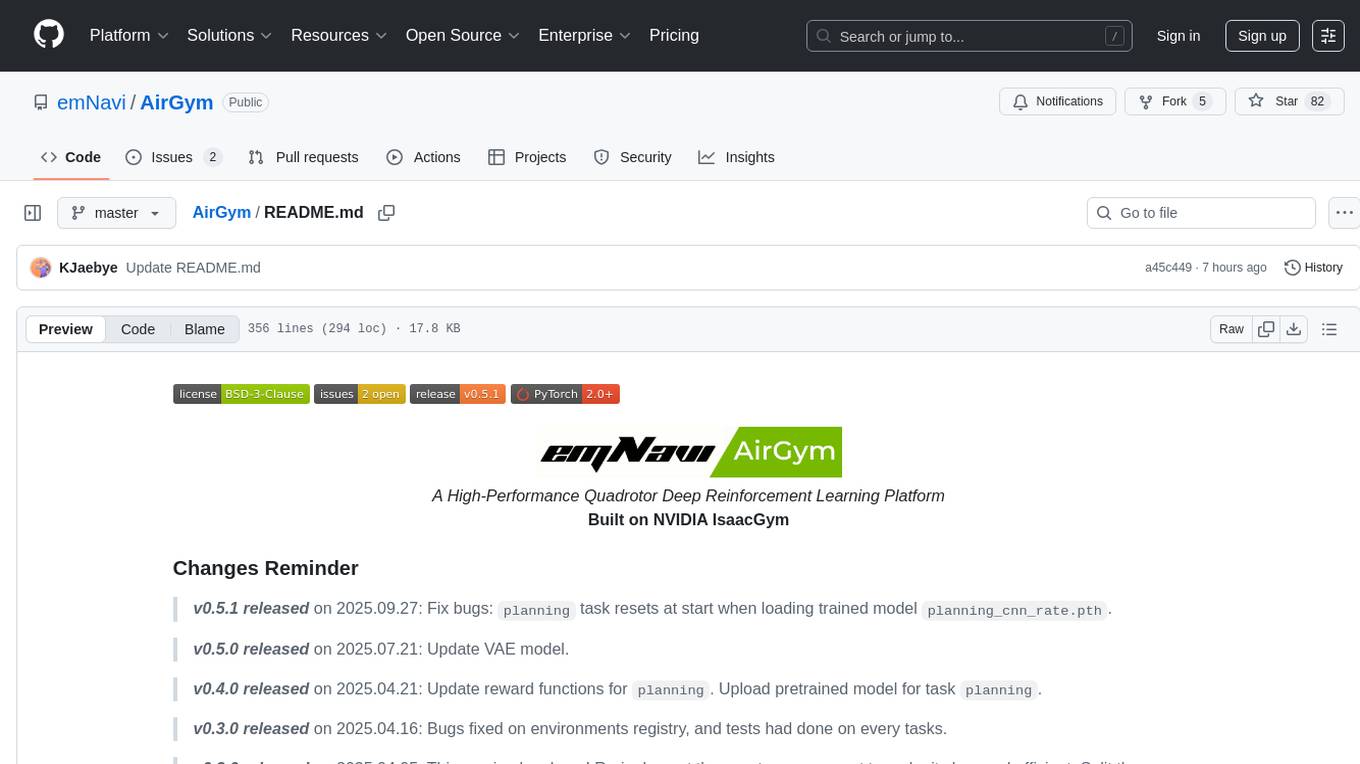
AirGym
AirGym is an open source Python quadrotor simulator based on IsaacGym, providing a high-fidelity dynamics and Deep Reinforcement Learning (DRL) framework for quadrotor robot learning research. It offers a lightweight and customizable platform with strict alignment with PX4 logic, multiple control modes, and Sim-to-Real toolkits. Users can perform tasks such as Hovering, Balloon, Tracking, Avoid, and Planning, with the ability to create customized environments and tasks. The tool also supports training from scratch, visual encoding approaches, playing and testing of trained models, and customization of new tasks and assets.
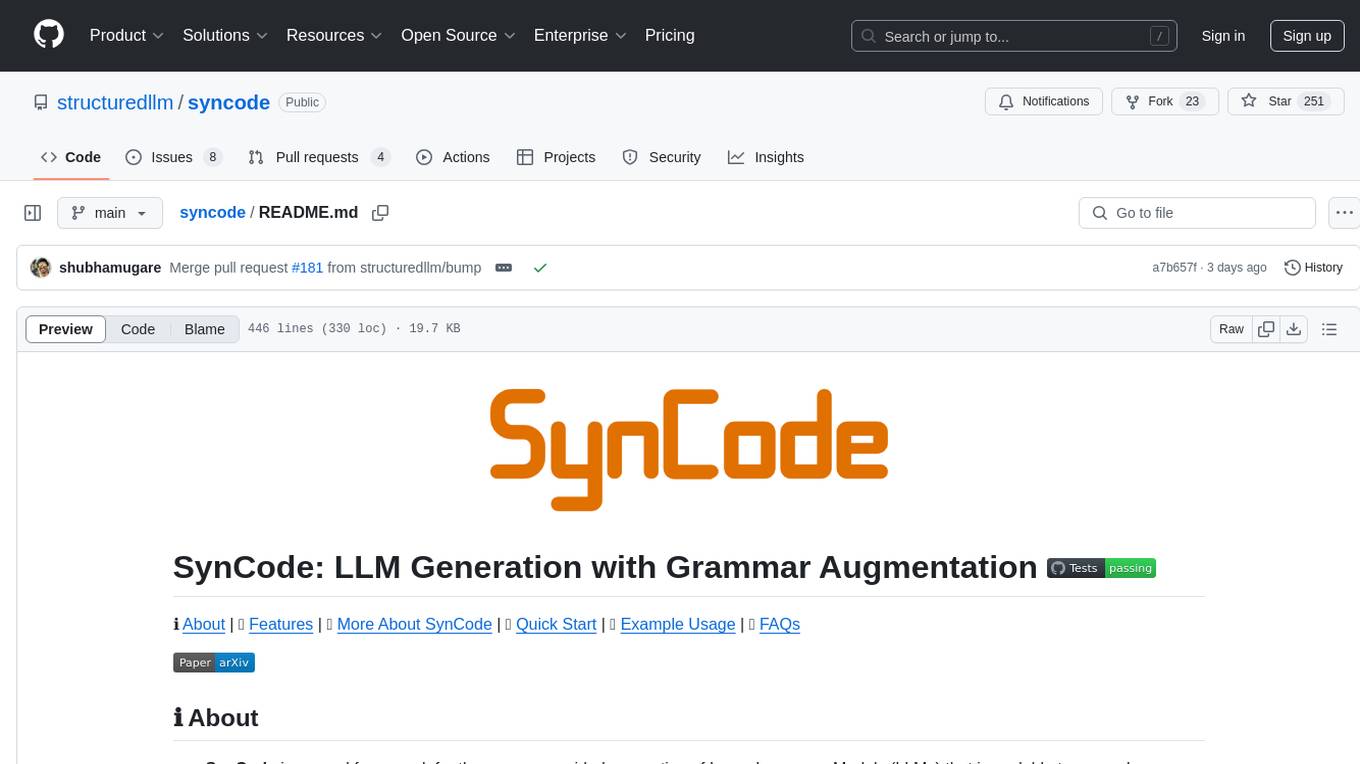
syncode
SynCode is a novel framework for the grammar-guided generation of Large Language Models (LLMs) that ensures syntactically valid output based on a Context-Free Grammar (CFG). It supports various programming languages like Python, Go, SQL, Math, JSON, and more. Users can define custom grammars using EBNF syntax. SynCode offers fast generation, seamless integration with HuggingFace Language Models, and the ability to sample with different decoding strategies.
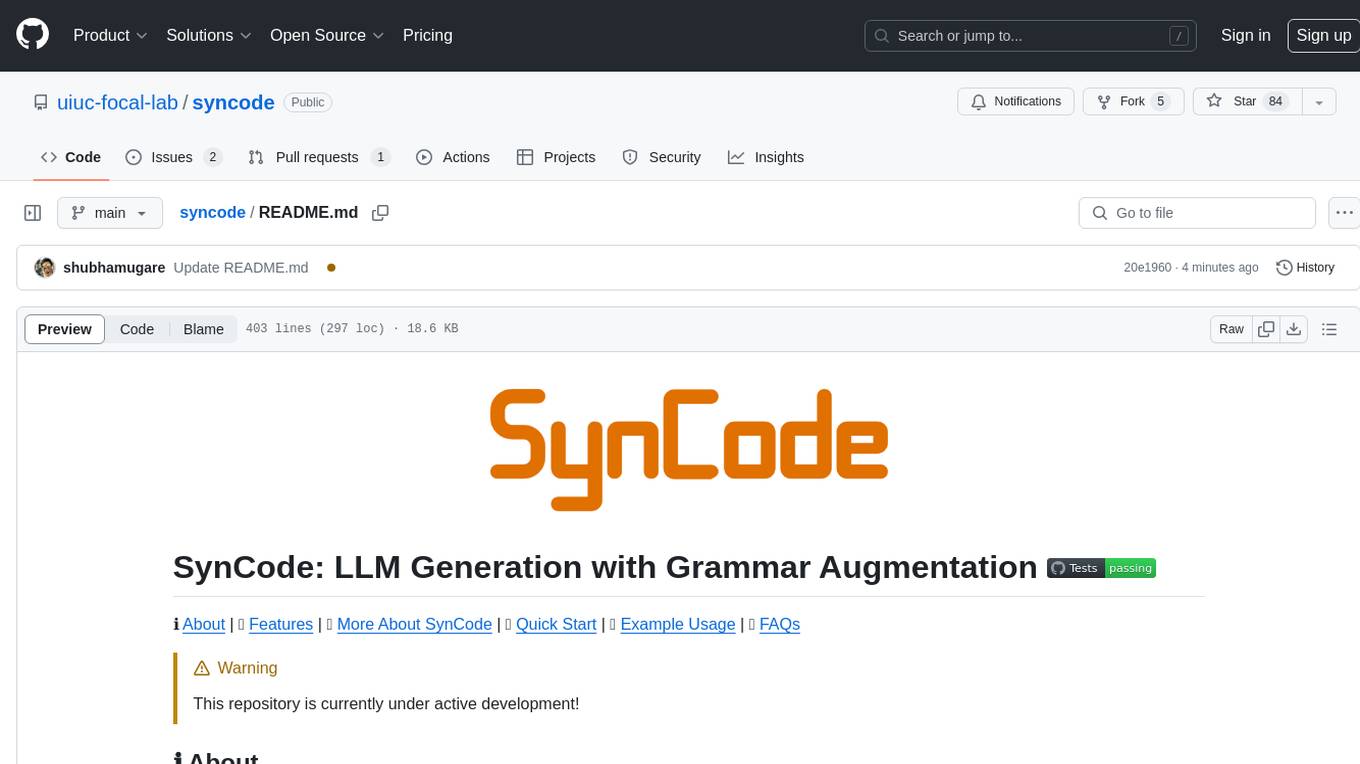
syncode
SynCode is a novel framework for the grammar-guided generation of Large Language Models (LLMs) that ensures syntactically valid output with respect to defined Context-Free Grammar (CFG) rules. It supports general-purpose programming languages like Python, Go, SQL, JSON, and more, allowing users to define custom grammars using EBNF syntax. The tool compares favorably to other constrained decoders and offers features like fast grammar-guided generation, compatibility with HuggingFace Language Models, and the ability to work with various decoding strategies.
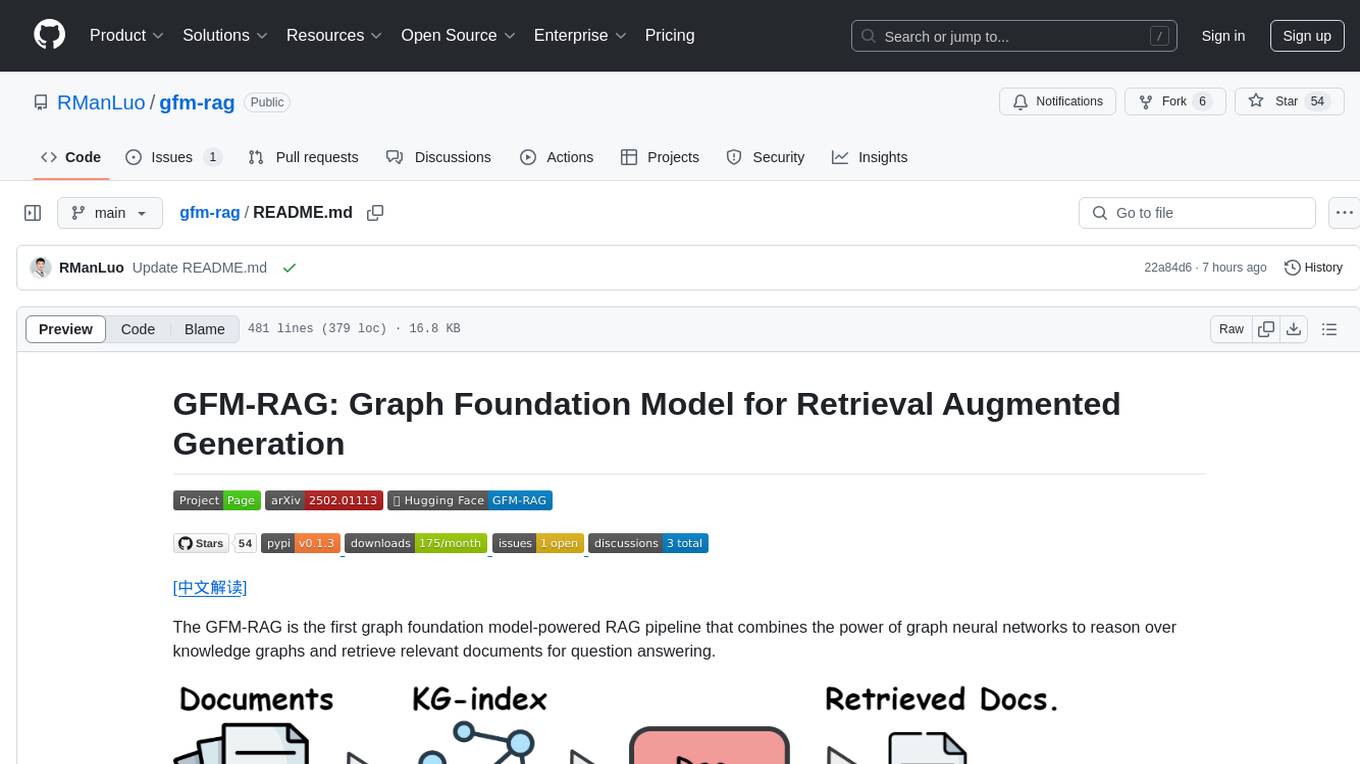
gfm-rag
The GFM-RAG is a graph foundation model-powered pipeline that combines graph neural networks to reason over knowledge graphs and retrieve relevant documents for question answering. It features a knowledge graph index, efficiency in multi-hop reasoning, generalizability to unseen datasets, transferability for fine-tuning, compatibility with agent-based frameworks, and interpretability of reasoning paths. The tool can be used for conducting retrieval and question answering tasks using pre-trained models or fine-tuning on custom datasets.
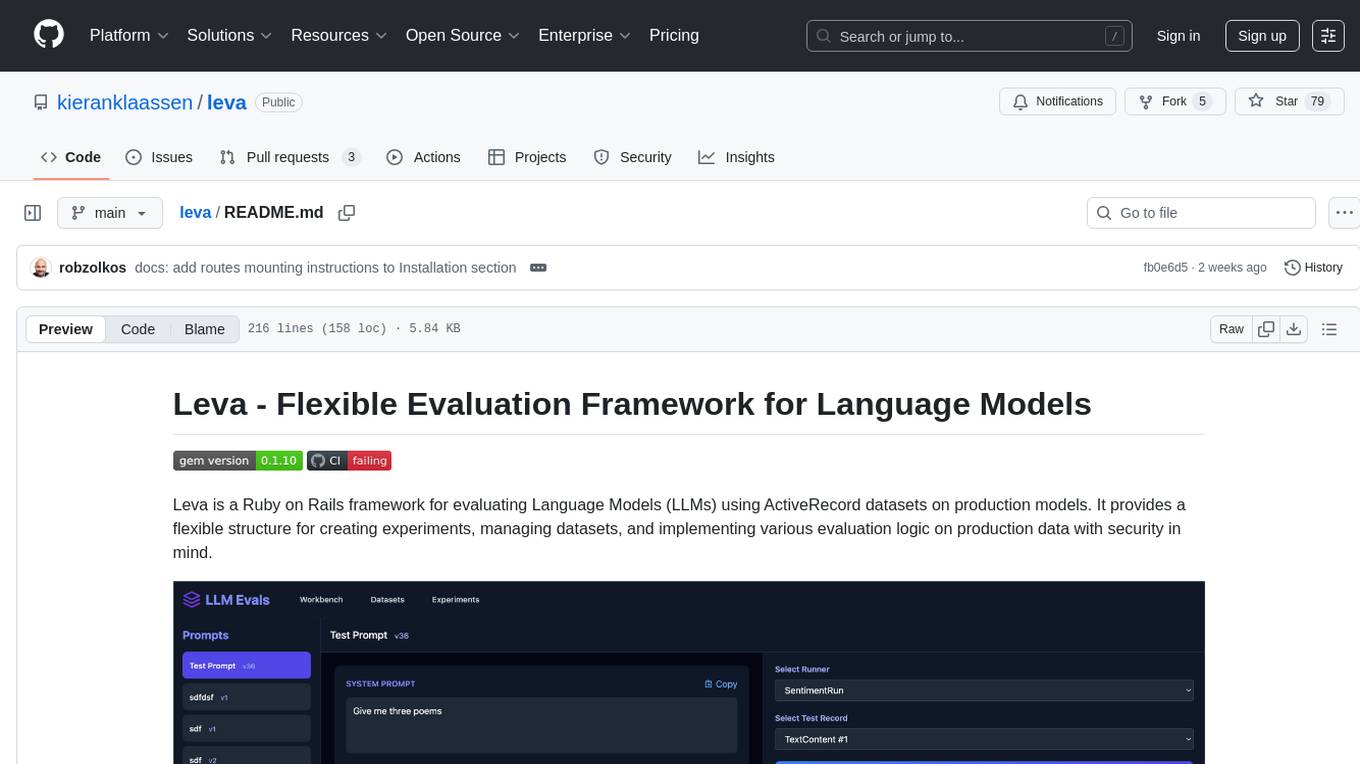
leva
Leva is a Ruby on Rails framework designed for evaluating Language Models (LLMs) using ActiveRecord datasets on production models. It offers a flexible structure for creating experiments, managing datasets, and implementing various evaluation logic on production data with security in mind. Users can set up datasets, implement runs and evals, run experiments with different configurations, use prompts, and analyze results. Leva's components include classes like Leva, Leva::BaseRun, and Leva::BaseEval, as well as models like Leva::Dataset, Leva::DatasetRecord, Leva::Experiment, Leva::RunnerResult, Leva::EvaluationResult, and Leva::Prompt. The tool aims to provide a comprehensive solution for evaluating language models efficiently and securely.
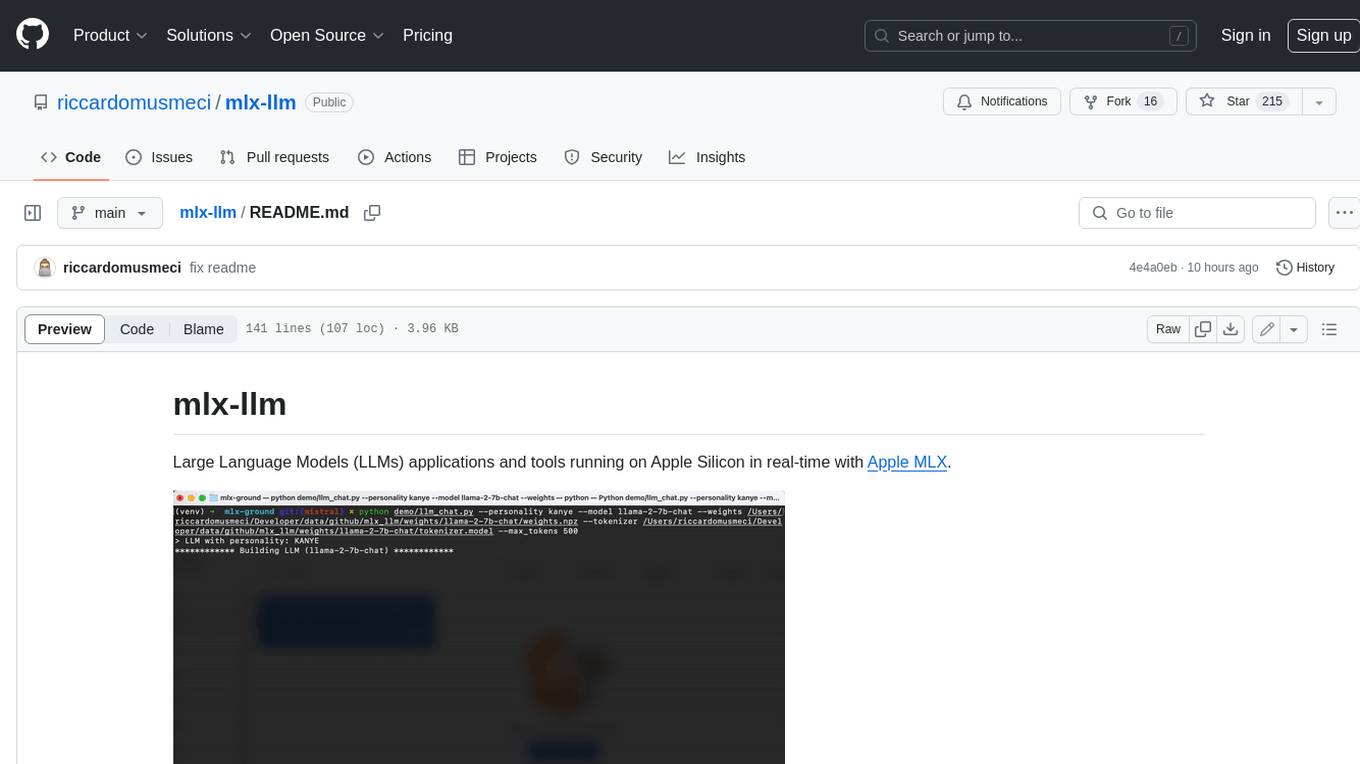
mlx-llm
mlx-llm is a library that allows you to run Large Language Models (LLMs) on Apple Silicon devices in real-time using Apple's MLX framework. It provides a simple and easy-to-use API for creating, loading, and using LLM models, as well as a variety of applications such as chatbots, fine-tuning, and retrieval-augmented generation.
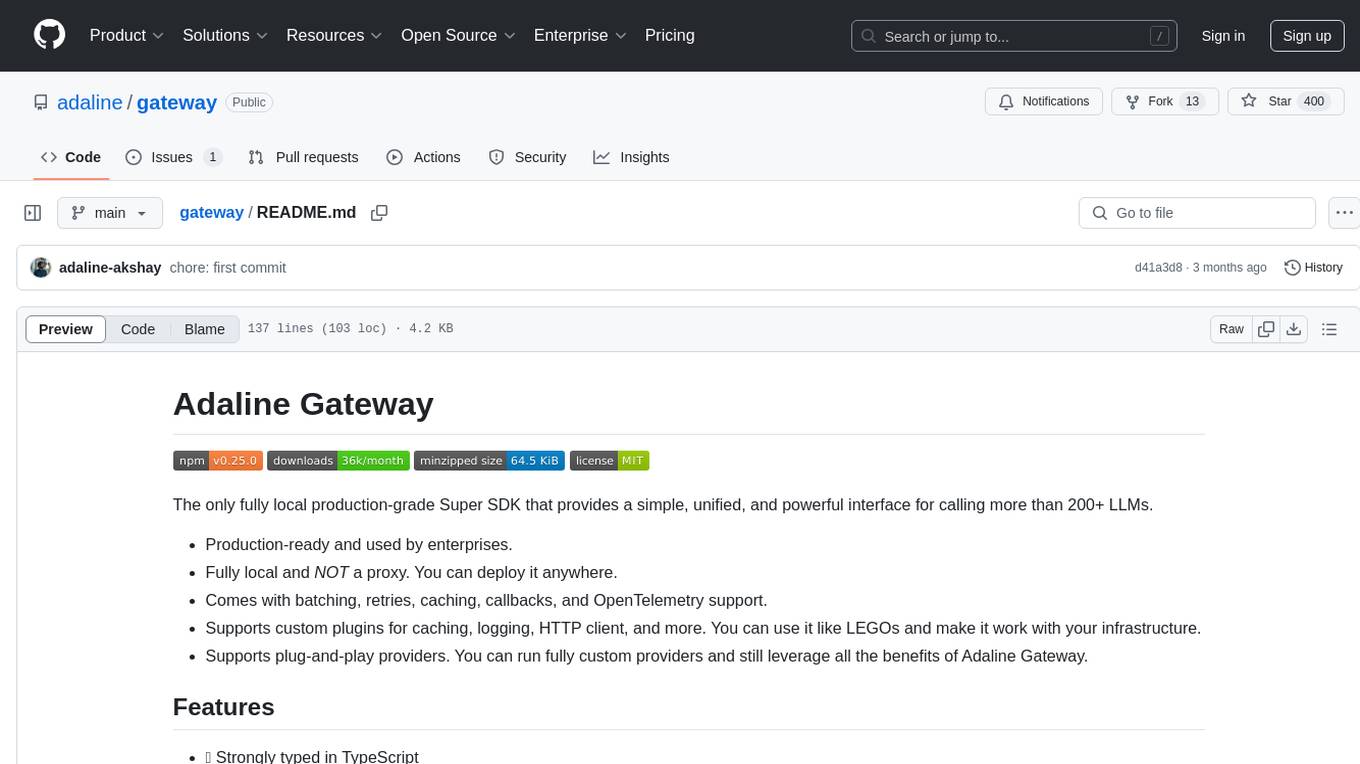
gateway
Adaline Gateway is a fully local production-grade Super SDK that offers a unified interface for calling over 200+ LLMs. It is production-ready, supports batching, retries, caching, callbacks, and OpenTelemetry. Users can create custom plugins and providers for seamless integration with their infrastructure.
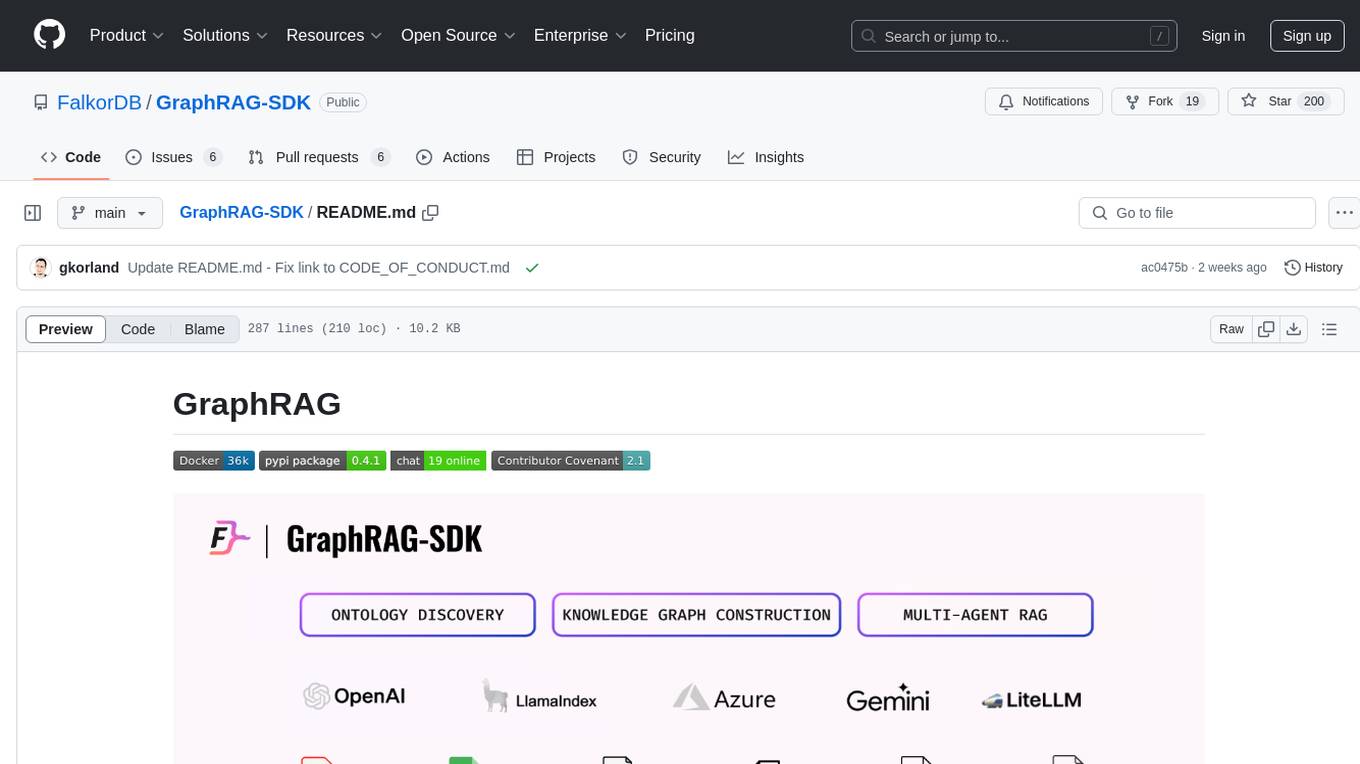
GraphRAG-SDK
Build fast and accurate GenAI applications with GraphRAG SDK, a specialized toolkit for building Graph Retrieval-Augmented Generation (GraphRAG) systems. It integrates knowledge graphs, ontology management, and state-of-the-art LLMs to deliver accurate, efficient, and customizable RAG workflows. The SDK simplifies the development process by automating ontology creation, knowledge graph agent creation, and query handling, enabling users to interact and query their knowledge graphs effectively. It supports multi-agent systems and orchestrates agents specialized in different domains. The SDK is optimized for FalkorDB, ensuring high performance and scalability for large-scale applications. By leveraging knowledge graphs, it enables semantic relationships and ontology-driven queries that go beyond standard vector similarity, enhancing retrieval-augmented generation capabilities.
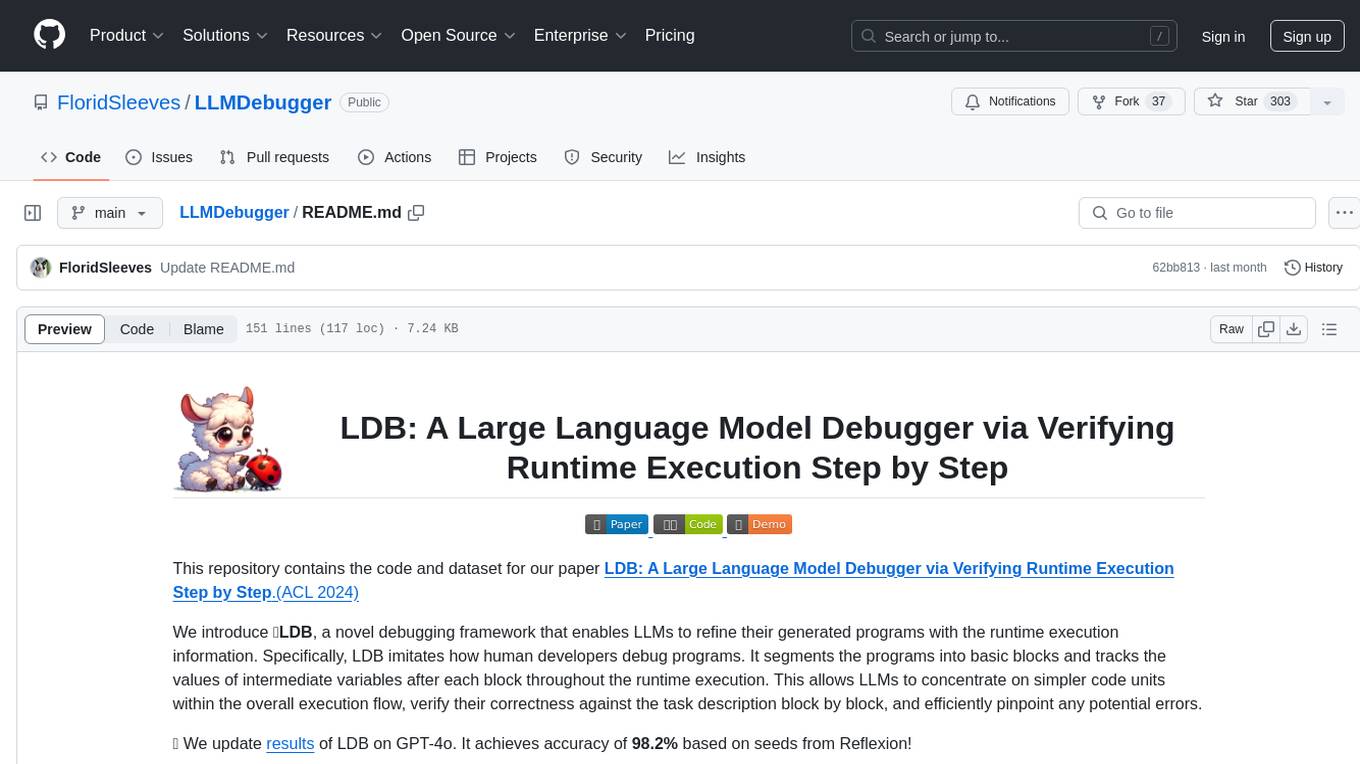
LLMDebugger
This repository contains the code and dataset for LDB, a novel debugging framework that enables Large Language Models (LLMs) to refine their generated programs by tracking the values of intermediate variables throughout the runtime execution. LDB segments programs into basic blocks, allowing LLMs to concentrate on simpler code units, verify correctness block by block, and pinpoint errors efficiently. The tool provides APIs for debugging and generating code with debugging messages, mimicking how human developers debug programs.

req_llm
ReqLLM is a Req-based library for LLM interactions, offering a unified interface to AI providers through a plugin-based architecture. It brings composability and middleware advantages to LLM interactions, with features like auto-synced providers/models, typed data structures, ergonomic helpers, streaming capabilities, usage & cost extraction, and a plugin-based provider system. Users can easily generate text, structured data, embeddings, and track usage costs. The tool supports various AI providers like Anthropic, OpenAI, Groq, Google, and xAI, and allows for easy addition of new providers. ReqLLM also provides API key management, detailed documentation, and a roadmap for future enhancements.
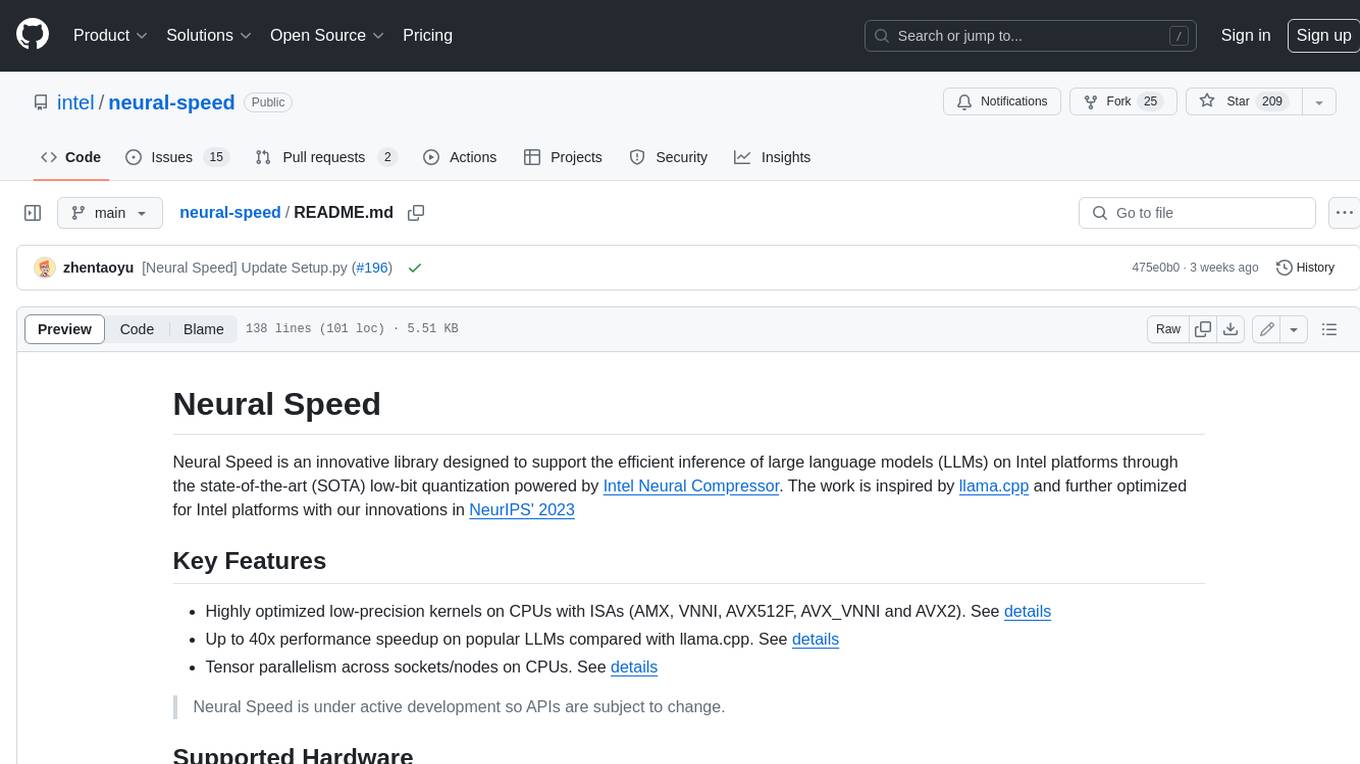
neural-speed
Neural Speed is an innovative library designed to support the efficient inference of large language models (LLMs) on Intel platforms through the state-of-the-art (SOTA) low-bit quantization powered by Intel Neural Compressor. The work is inspired by llama.cpp and further optimized for Intel platforms with our innovations in NeurIPS' 2023
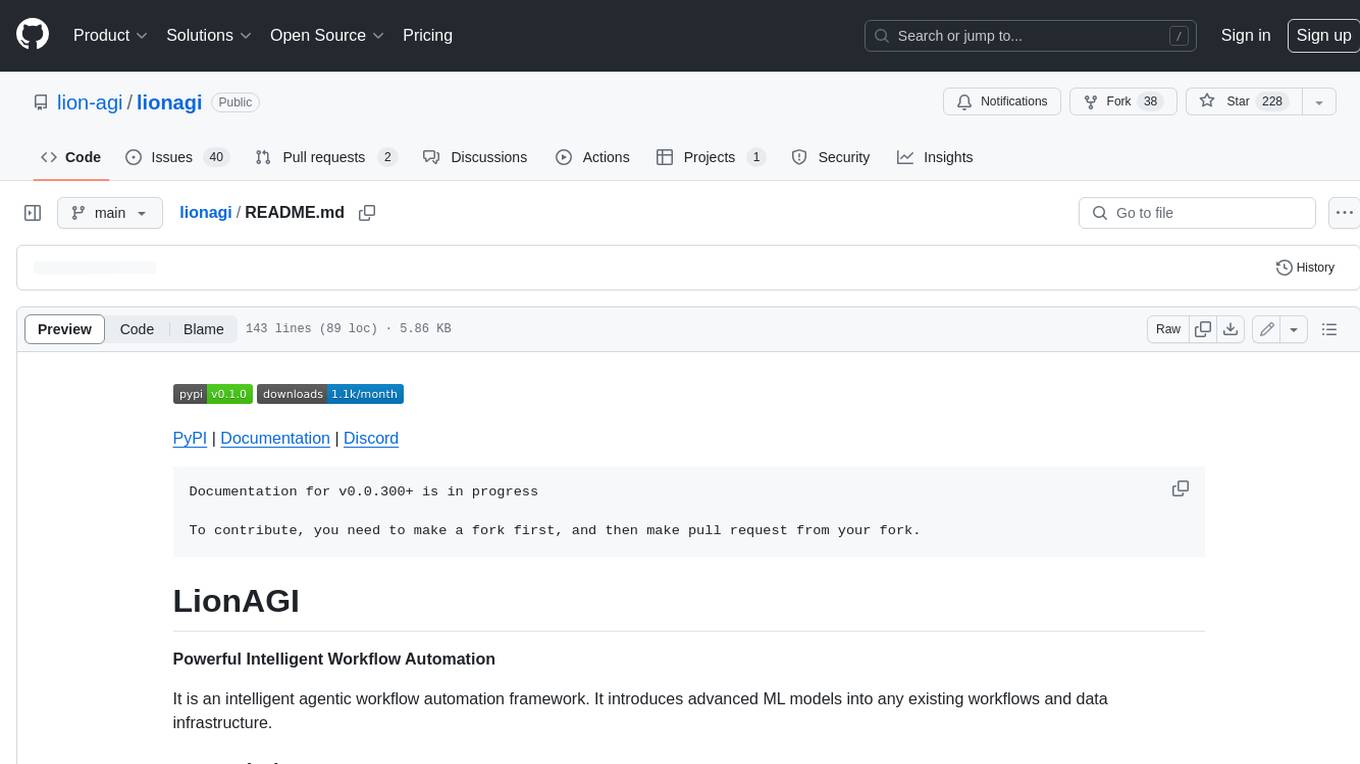
lionagi
LionAGI is a powerful intelligent workflow automation framework that introduces advanced ML models into any existing workflows and data infrastructure. It can interact with almost any model, run interactions in parallel for most models, produce structured pydantic outputs with flexible usage, automate workflow via graph based agents, use advanced prompting techniques, and more. LionAGI aims to provide a centralized agent-managed framework for "ML-powered tools coordination" and to dramatically lower the barrier of entries for creating use-case/domain specific tools. It is designed to be asynchronous only and requires Python 3.10 or higher.

golf
Golf is a simple command-line tool for calculating the distance between two geographic coordinates. It uses the Haversine formula to accurately determine the distance between two points on the Earth's surface. This tool is useful for developers working on location-based applications or projects that require distance calculations. With Golf, users can easily input latitude and longitude coordinates and get the precise distance in kilometers or miles. The tool is lightweight, easy to use, and can be integrated into various programming workflows.
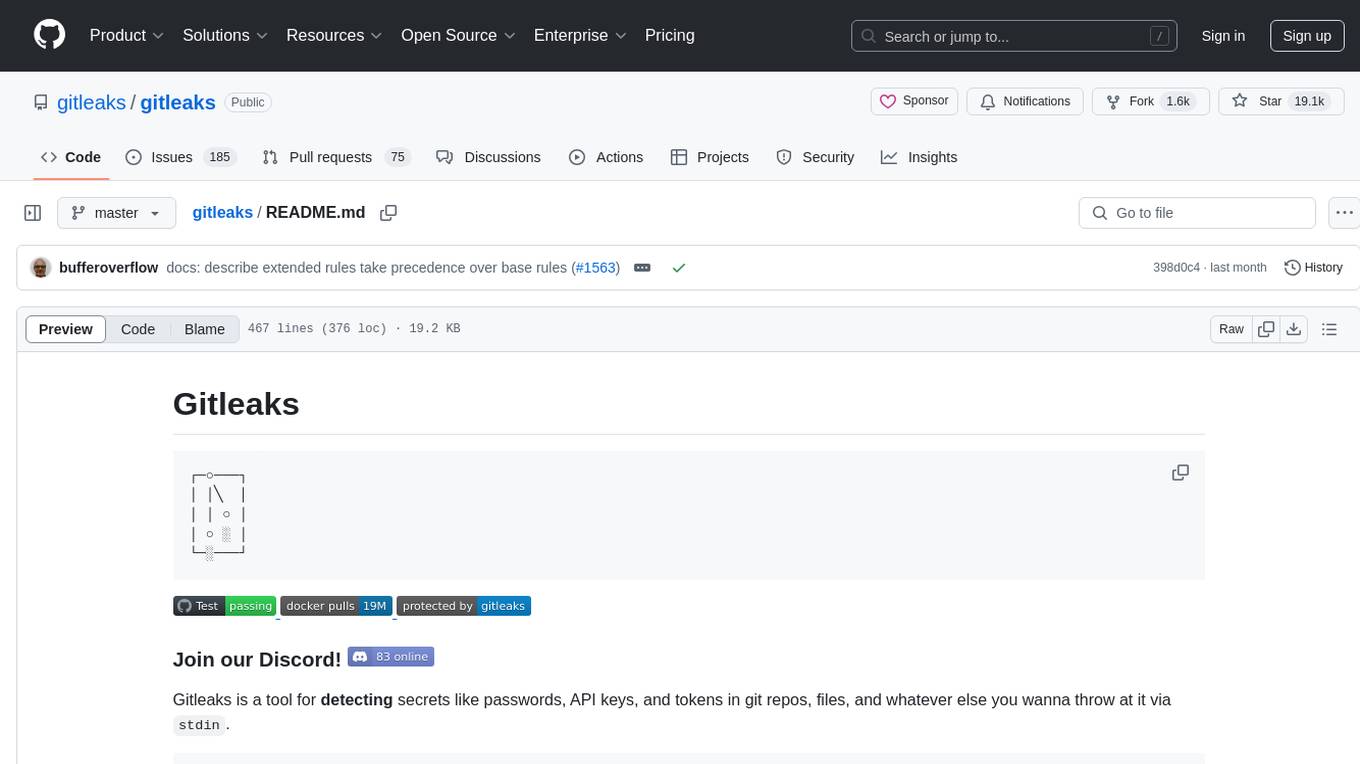
gitleaks
Gitleaks is a tool for detecting secrets like passwords, API keys, and tokens in git repos, files, and whatever else you wanna throw at it via stdin. It can be installed using Homebrew, Docker, or Go, and is available in binary form for many popular platforms and OS types. Gitleaks can be implemented as a pre-commit hook directly in your repo or as a GitHub action. It offers scanning modes for git repositories, directories, and stdin, and allows creating baselines for ignoring old findings. Gitleaks also provides configuration options for custom secret detection rules and supports features like decoding encoded text and generating reports in various formats.
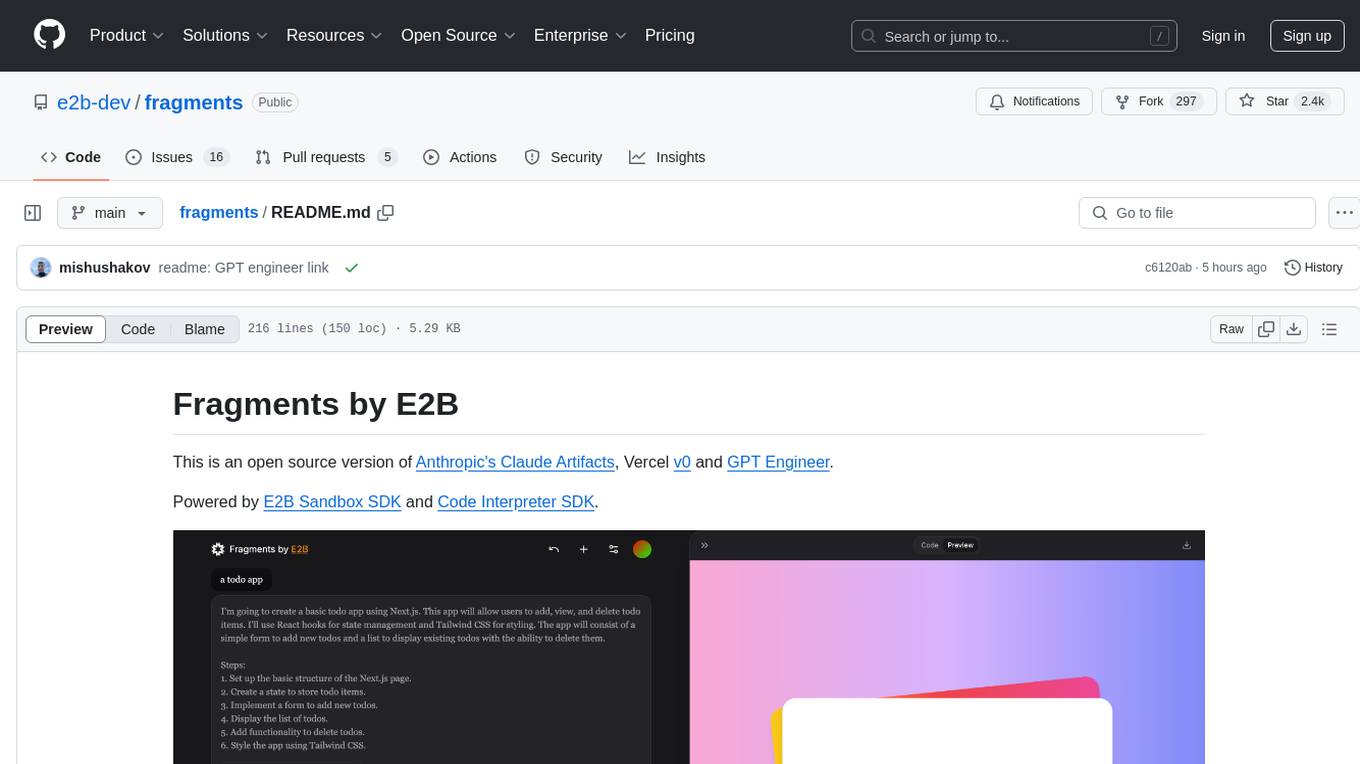
fragments
Fragments is an open-source tool that leverages Anthropic's Claude Artifacts, Vercel v0, and GPT Engineer. It is powered by E2B Sandbox SDK and Code Interpreter SDK, allowing secure execution of AI-generated code. The tool is based on Next.js 14, shadcn/ui, TailwindCSS, and Vercel AI SDK. Users can stream in the UI, install packages from npm and pip, and add custom stacks and LLM providers. Fragments enables users to build web apps with Python interpreter, Next.js, Vue.js, Streamlit, and Gradio, utilizing providers like OpenAI, Anthropic, Google AI, and more.
For similar tasks

HippoRAG
HippoRAG is a novel retrieval augmented generation (RAG) framework inspired by the neurobiology of human long-term memory that enables Large Language Models (LLMs) to continuously integrate knowledge across external documents. It provides RAG systems with capabilities that usually require a costly and high-latency iterative LLM pipeline for only a fraction of the computational cost. The tool facilitates setting up retrieval corpus, indexing, and retrieval processes for LLMs, offering flexibility in choosing different online LLM APIs or offline LLM deployments through LangChain integration. Users can run retrieval on pre-defined queries or integrate directly with the HippoRAG API. The tool also supports reproducibility of experiments and provides data, baselines, and hyperparameter tuning scripts for research purposes.
For similar jobs

sweep
Sweep is an AI junior developer that turns bugs and feature requests into code changes. It automatically handles developer experience improvements like adding type hints and improving test coverage.

teams-ai
The Teams AI Library is a software development kit (SDK) that helps developers create bots that can interact with Teams and Microsoft 365 applications. It is built on top of the Bot Framework SDK and simplifies the process of developing bots that interact with Teams' artificial intelligence capabilities. The SDK is available for JavaScript/TypeScript, .NET, and Python.

ai-guide
This guide is dedicated to Large Language Models (LLMs) that you can run on your home computer. It assumes your PC is a lower-end, non-gaming setup.

classifai
Supercharge WordPress Content Workflows and Engagement with Artificial Intelligence. Tap into leading cloud-based services like OpenAI, Microsoft Azure AI, Google Gemini and IBM Watson to augment your WordPress-powered websites. Publish content faster while improving SEO performance and increasing audience engagement. ClassifAI integrates Artificial Intelligence and Machine Learning technologies to lighten your workload and eliminate tedious tasks, giving you more time to create original content that matters.

chatbot-ui
Chatbot UI is an open-source AI chat app that allows users to create and deploy their own AI chatbots. It is easy to use and can be customized to fit any need. Chatbot UI is perfect for businesses, developers, and anyone who wants to create a chatbot.

BricksLLM
BricksLLM is a cloud native AI gateway written in Go. Currently, it provides native support for OpenAI, Anthropic, Azure OpenAI and vLLM. BricksLLM aims to provide enterprise level infrastructure that can power any LLM production use cases. Here are some use cases for BricksLLM: * Set LLM usage limits for users on different pricing tiers * Track LLM usage on a per user and per organization basis * Block or redact requests containing PIIs * Improve LLM reliability with failovers, retries and caching * Distribute API keys with rate limits and cost limits for internal development/production use cases * Distribute API keys with rate limits and cost limits for students

uAgents
uAgents is a Python library developed by Fetch.ai that allows for the creation of autonomous AI agents. These agents can perform various tasks on a schedule or take action on various events. uAgents are easy to create and manage, and they are connected to a fast-growing network of other uAgents. They are also secure, with cryptographically secured messages and wallets.

griptape
Griptape is a modular Python framework for building AI-powered applications that securely connect to your enterprise data and APIs. It offers developers the ability to maintain control and flexibility at every step. Griptape's core components include Structures (Agents, Pipelines, and Workflows), Tasks, Tools, Memory (Conversation Memory, Task Memory, and Meta Memory), Drivers (Prompt and Embedding Drivers, Vector Store Drivers, Image Generation Drivers, Image Query Drivers, SQL Drivers, Web Scraper Drivers, and Conversation Memory Drivers), Engines (Query Engines, Extraction Engines, Summary Engines, Image Generation Engines, and Image Query Engines), and additional components (Rulesets, Loaders, Artifacts, Chunkers, and Tokenizers). Griptape enables developers to create AI-powered applications with ease and efficiency.






